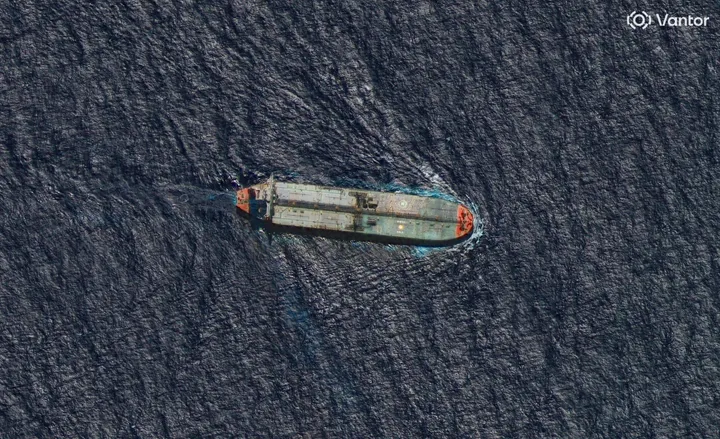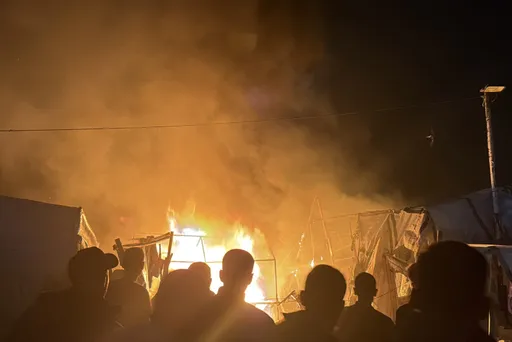The geothermal Dallol area in the Danakil Depression is a hellish yet beautiful landscape: dubbed ‘the hottest place on Earth’, it can measure “daily winter temperatures [that] can easily exceed 45°C”.
Located in northeast Ethiopia, Dallol consists of “hypersaline sites, magnesium-rich brines, and hypersaline, hyperacidic and hot pools on an active volcano”. The site has been called “one of the most alien places on Earth” by the BBC, which reported in 2017 that an expedition had found it “teeming with life.”
That may not be the case, as a recent scientific article asserts. A team of scientists led by biologist Purificacion Lopez Garcia say there is no life in Dallol’s multi-extreme ponds, Spain’s Information and Scientific News Service (SINC) reports.
Those who say they have found life in the Danakil Depression
Barbara Cavalazzi from the University of Bologna in Italy was part of the team who made the assertion that life could flourish in the Danakil Depression. She and her team suggested that by studying the extreme conditions in Dallol, one could draw parallels with extraterrestrial research –– for example, on Mars.
“On Mars, you have mineral deposits and sulphate deposits similar to those seen in the Danakil Depression. You also have active brine flowing periodically,” Cavalazzi told the BBC in 2017. So by studying in which extreme Earthly environments life can survive, and how it does so, we can start to figure out which regions of planets like Mars might be habitable, the BBC reported.
Cavalazzi admits that birds and small animals cannot survive in the area, because of the toxic gases near the ground that is carbon dioxide rich and poisons wildlife. Humans are not susceptible as they are taller.
The life forms Cavalazzi and her team are referring to are “bacteria found in both the salt springs and in Danakil volcanic crater.”
Cavalazzi’s team, led by Felipe Gomez, published its findings in Nature magazine in May 2019, saying “We demonstrated the presence of living ultra-small microorganisms in a multi-extreme environment with adverse conditions for life: extreme low pH (0.25), temperature (90 °C), redox potential, salinity and heavy metals content.”
“The presence of life in the Dallol hot springs expands our understanding of the limits of habitability on Earth and beyond,” the report stated.
Those who find there is no life on Dallol
Yet Gomez and Cavalazzi’s team may have been off the mark in saying there is life in Dallol. The team led by Purificacion Lopez Garcia have published their findings on the contrary in Nature magazine in October 2019.
Gomez’s team had posited their results as a study for the possibility of life on Mars or other planets, yet Lopez Garcia’s team cautions against jumping to such conclusions. Lopez Garcia’s team notes “Our work helps circumscribing habitability and calls for cautionary interpretations of morphological biosignatures on Earth and beyond.”
“After analysing many more samples than in previous works, with adequate controls so as not to contaminate them and a well-calibrated methodology, we have verified that there’s no microbial life in these salty, hot and hyperacid pools or in the adjacent magnesium-rich brine lakes,” Lopez García says, quoted by SINC.
Lopez Garcia and team’s discovery means there is at least one spot on Earth that is inhabitable by any life form. She says there is life around the area, but not in Dallol’s waters, which are sterile.
“What does exist is a great diversity of halophilic archaea (a type of primitive salt-loving microorganisms) in the desert and the saline canyons around the hydrothermal site,” Lopez Garcia told SINC, “but neither in the hyperacid and hypersaline pools themselves, nor in the so-called Black and Yellow lakes of Dallol, where magnesium abounds. And all this despite the fact that microbial dispersion in this area, due to the wind and to human visitors, is intense.”
According to the biologist, viewing samples under the microscope should be approached with caution. While some visuals might resemble organisms, they may in fact be abiotic formations. According to SINC, “silica-rich Dallol mineral precipitates may look like microbial cells” where in reality they are not remnants of, or are, lifeforms.
“In addition, our study presents evidence that there are places on the Earth's surface, such as the Dallol pools, which are sterile even though they contain liquid water,” Lopez Garcia points out. This means, SINC extrapolated, that the presence of liquid water on a planet, which is often used as a habitability criterion, does not directly imply that it has life.
























